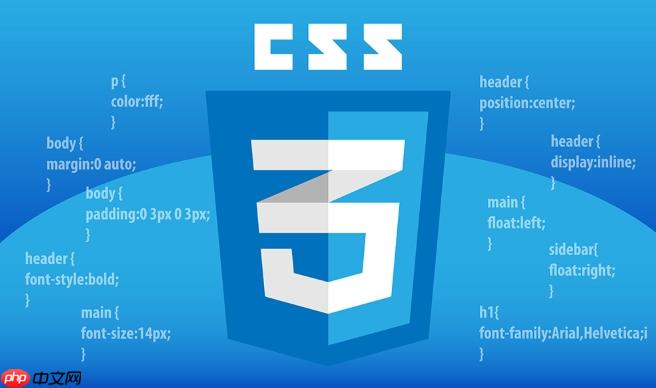答案是通过动态控制link标签的disabled属性实现主题切换。准备多个css文件并预设带id的link标签,用JavaScript根据用户选择启用对应样式表,同时禁用其他,结合localStorage保存偏好,结构清晰且易扩展。

在html中实现多主题CSS文件的引入与主题切换,关键在于动态控制页面加载的样式表。通过JavaScript操作link标签或CSS类名,可以灵活实现用户自定义的主题切换功能。以下是实用且易于维护的实现方案。
1. 准备多个主题CSS文件
将不同主题的样式分别写入独立的CSS文件,例如:
每个文件只包含该主题特有的样式,如:
body { background: #fff; color: #333; }
/* theme-dark.css 示例 */
body { background: #1a1a1a; color: #eee; }
2. 在HTML中预设link标签
在页面head中引入所有主题CSS文件,并设置disabled属性初始禁用非默认主题:
立即学习“前端免费学习笔记(深入)”;
<link id=”theme-default” rel=”stylesheet” href=”css/theme-default.css”>
<link id=”theme-dark” rel=”stylesheet” href=”css/theme-dark.css” disabled>
<link id=”theme-blue” rel=”stylesheet” href=”css/theme-blue.css” disabled>
通过id标识每个主题,便于JS控制启用状态。
3. 使用JavaScript切换主题
编写简单脚本根据用户选择启用对应样式表:
function changeTheme(themeName) {
const themes = [‘default’, ‘dark’, ‘blue’];
themes.foreach(name => {
const link = document.getElementById(‘theme-‘ + name);
if (name === themeName) {
link.removeAttribute(‘disabled’);
} else {
link.setAttribute(‘disabled’, ‘disabled’);
}
});
// 可选:保存用户偏好
localStorage.setItem(‘user-theme’, themeName);
}
调用 changeTheme(‘dark’) 即可切换到暗黑主题。
4. 添加用户切换界面
提供按钮或下拉菜单供用户选择:
<button onclick=”changeTheme(‘default’)”>默认</button>
<button onclick=”changeTheme(‘dark’)”>暗黑</button>
<button onclick=”changeTheme(‘blue’)”>蓝色</button>
页面加载时可读取localStorage恢复上次选择的主题。
基本上就这些。这种方法兼容性好,逻辑清晰,适合大多数网站使用。关键是把主题样式分离,再通过JS精准控制启用哪个样式表。不复杂但容易忽略细节,比如disabled属性的操作和ID命名一致性。保持结构简洁,后续扩展新主题也很方便。


